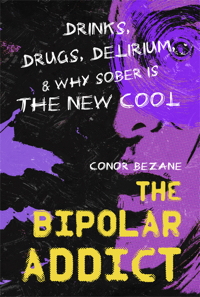Norwegian artist Edvard Munch’s masterpiece The Scream is as iconic as The Starry Night by Vincent Van Gogh, Guernica by Pablo Picasso, and The Persistence of Memory by Salvador Dalí. It has been called “A Mona Lisa for our time” by journalist Arthur Lubow in The Smithsonian magazine.
The famous painting was born out of a bipolar hallucination, as Munch describes in his personal diaries:
The sun was going down — had dipped in flames below the horizon. It was like a flaming sword of blood slicing through the concave of heaven. The sky was like blood — sliced with strips of fire — the hills turned deep blue the fjord — cut in cold blue, yellow, and red colors — The exploding bloody red — on the path and hand railing — my friends turned glaring yellow white — I felt a great scream — and I heard, yes, a great scream — the colors in nature — broke the lines of nature — the lines and colors vibrated with motion — these oscillations of life brought not only my eye into oscillations, it brought also my ears into oscillations — so I actually heard a scream — I painted Scream then.
The figure in black stands on a bridge, hands cuffed over its ears. He or she screams with the blue of the fjord behind and the blood-red sky above. The painting is a pillar of art history, notorious for its raw dynamism and melancholic aura.
The image has been reproduced ad infinitum on posters and all kinds of trinkets sold in art museum gift shops, from dolls to Halloween masks.
Munch was not only bipolar but suffered from alcoholism, for which he was treated in a sanitarium in both 1900 and 1905. He had a fabled history of psychiatric hospital stays. In 1908, after a nervous breakdown, he was committed to a psychiatric hospital for auditory hallucinations, depression, and suicidal ideations. His doctor, Dr. Daniel Jacobson, can be seen in a portrait Munch painted. At the hospital, the artist was given a series of “electrifications.” (Not ECT. This was before electroconvulsive therapy was an available treatment).
Epitomizing the archetype of the “tortured artist,” Munch is proud of his mental illness.
“My fear of life is necessary to me, as is my illness,” he once said. “Without anxiety and illness, I am a ship without a rudder. My art is grounded in reflections over being different from others. My sufferings are part of my self and my art. They are indistinguishable from me, and their destruction would destroy my art. I want to keep those sufferings.”
Although he was Norwegian, Munch is associated with the German Expressionist movement in art.
Both his mother and favorite sister died of tuberculosis. He was raised by his father, who was a devout Lutheran and would read to him the writings of Edgar Allan Poe.
“My father was temperamentally nervous and obsessively religious — to the point of psychoneurosis,” Munch is quoted in Sue Prideaux’s 2005 book Edvard Munch: Behind the Scream. “From him I inherited the seeds of madness. The angels of fear, sorrow, and death stood by my side since the day I was born.”
Munch was a sickly child who ended up staying home from school most winters, when — with so much free time — he would sketch. He suffered from vivid nightmares.
As an adult, he lived intermittently in Paris and Berlin, where he exhibited his paintings. Some of his most well-known works include The Sick Child (1885), Love and Pain (1895, also known as Vampire), and The Dance of Life (1899-1900).
After Munch’s hospital stay in 1908, Dr. Jacobson ordered his patient to give up drinking alcohol in public and to only associate with close friends. His paintings thereafter were much brighter and more cheerful.
In the 1930s and 1940s, Adolf Hitler and the Nazis labeled Munch’s work “degenerate art” and removed 82 of his paintings from German museums.
Munch didn’t see the end of World War II. He died January 23, 1944. According to The Smithsonian, when Munch passed at the age of 80, there was a collection of 1,008 paintings, 4,443 drawings, and 15,391 prints, as well as photographs, lithographs, etchings, woodcuts, and copperplates — all found behind locked doors on the second floor of his house. This intensely prolific body of work is further proof that Munch went through manic — super-productive — periods.
“Illness, insanity, and death were the black angels that kept watch over my cradle,” Munch once said. “They accompanied me all my life.”








